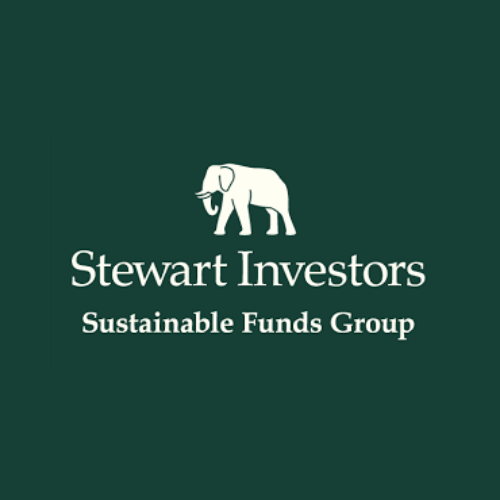Sustainable Investment in Asia Pacific - Through the Looking-Glass




By David Gait, Stewart Investors
Sustainable Funds Group
Disbelief.
So if I understand correctly, you’re saying your business model is based upon buying the rights to products that have been banned in Europe for safety and environmental reasons, and selling those same products into Asian countries which have yet to ban them?”
The CEO nods enthusiastically. “Exactly!” He leans forward. “Environmental arbitrage [G1]! So long as they are legal in one or more countries, there is value left in them.”
More disbelief. It’s 2020. How is this still happening? This is a company which easily accesses society’s savings via the stock market. There is plenty of disbelief still to be had elsewhere among listed Asia Pacific companies. The power generation company which attributes its success to “not letting the women in.” The mining company whose dam collapsed, killing 19 people and polluting almost 700km of watercourses. All are the easy recipients of society’s capital. Why?
In the sequel to Lewis Carroll’s ‘Alice in Wonderland’, Alice climbs ‘Through the Looking-Glass’ and finds another fantastical world, absent of reason and where everything is reversed. Time moves backwards. Events can be remembered before they happen. The right foot belongs in the left shoe. This crisis of logic is all too evident when investing in Asia Pacific.
As the Red Queen says to Alice, “it takes all the running you can do to keep in the same place.” Sustainable investment [G2] in Asia Pacific is running hard now, but the goal seems to be getting further away. Rather than losing their licence to operate [G3], such companies are having little difficulty accessing equity markets. Why?
Short-termism has for some time now been the prime suspect. As the investment industry has given way to the speculation industry, there is less emphasis on understanding long-term risks and opportunities and more focus on next quarter’s results and a quick trading profit.
But perhaps there is another, more fantastical culprit lurking in Alice’s Financeland in the shape of ‘metric fixation.’
Jerry Muller defines metric fixation as ‘the aspiration to replace judgement based on experience with standardised measurement’. Metric fixation would be at home in Alice’s Looking-Glass world. An ‘upsidedownbacktofront’ idea that wreaks havoc wherever it goes. Muller notes the damage wrought by metric fixation across all aspects of society from academia to policing to healthcare. So too with Asia Pacific investing.
Metric fixation must itself share some of the blame for short-termism. The obsession with performance-related pay based on short-term measurable outcomes has been a major contributor to shrinking time horizons of both companies and investors.
Metric fixation has also been instrumental in the relentless drive towards passive investment [G4]. Currently an estimated US$3.75 trillion [1] of society’s savings are allocated passively to listed companies, based not on human judgement but rather on inert quantitative models [G5]. Before long, passive investment will be the primary means by which capital is allocated to listed companies in the Region.
The journey towards passive capital allocation has been a long and winding one, but its origins lie less in the search for cheaper costs and more in the desire to quantify and model investment risk. Metric fixation. The real risk of losing money from owning shares is complex and requires subjective judgement. But that is hard to model or count. Instead, the rise of metric fixation has led to the invention of benchmark risk.
Benchmark risk is another wonderful Alice character. It makes no sense. Why would losing 40% of an investment, but still outperforming an arbitrary index, be a good outcome? The closer a portfolio is to the index and some of its dubious constituents, the less ‘risky’ it becomes – and for as long as the industry continues to define risk in terms of deviation from arbitrary benchmarks, the outcome is an inexorable move towards passive investment.
And passive investment matters.






According to the WHO, tobacco kills more than one million Indians each year, accounting for 10% of all deaths in the country [2]. More than the global deaths from COVID-19 to date. Each year. So why does India’s largest tobacco company, with a market share of over 70%, have such easy access to society’s savings? With a market capitalisation of over US$30bn, its largest underlying shareholders are all passive funds. Why would society choose to allocate so much capital passively to a company that poses such health dangers? Looking-Glass absurdity.
Why isn’t the move towards sustainable investment in Asia Pacific counterbalancing this? Here too, metric fixation is causing trouble. The obsession with quantifying Environmental, Social & Governance (ESG) is proving particularly challenging. Looking-Glass illogic is rife. The worse the company’s real sustainability impact, often the greater the likelihood of a high ESG score. India’s leading tobacco company has an AA ESG ranking and sits near the top of at least two ESG benchmarks, courtesy of its size and its sizeable ESG reports.
It is not just ESG scoring where metric fixation has warped the outcomes. Sustainable Development Goals (SDGs) [G6] mapping makes little sense but is fast becoming the norm. The Asian group hoping to source coal from a new mine next to the fast-bleaching Great Barrier Reef map themselves to the Education, Health and Sustainable Cities SDGs.
The requirement to quantify the impact of investor engagement with companies is also nonsensical. Improving access to affordable medicines. Phasing out toxic chemicals. Encouraging greater board diversity. Increasing tax rates. Improving working capital for smallholder suppliers. More governance checks and balances. Engagement success in these areas usually takes years and can rarely, if ever, be attributed to one actor. Even when it can, putting a dollar price on such qualitative aspects of impact is as nonsensical as the Looking-Glass Jabberwocky.
If metric fixation is a problem, what are the solutions? In the world of sustainable investment very little which counts can be counted or ‘metricated’, let alone standardised. Rather than produce banks of ESG data, the far greater challenge facing Asia Pacific companies and investors is to be authentic, resonant and imaginative when it comes to sustainability. These three characteristics do not lend themselves to metrication nor incentivisation. They require judgement and much effort to understand.
Is the approach to sustainability authentic and built upon a clear sense of purpose? Or a box-ticking, marketing-driven path towards short-term gain? Does it resonate across all aspects of the business? Or is it a marriage of convenience with little commonality? The coal company with the solar panels. The tobacco company with the award-winning eco-hotel business.
Is there evidence of imagination? The Asian bank which developed a successful mobile payments system, enabling millions of people in rural areas without access to bank branches to access simple savings products in a country where financial inclusion is still below 50%. The computer power supply company building an electric vehicle power business. Or is management stuck with a fixed mindset, unable to imagine how sustainability can be a driver of returns? The paint company still selling toxic paint where it is still legal to do so. The all-male board unable to imagine how to get from A to B.
Asia Pacific is home to many of the world’s greatest development challenges. According to the UN, 25% of the population still live in multidimensional poverty. Over 600m people still have to resort to open defecation [3]. Inequality. Water scarcity. Climate change. There are still plenty of companies which are part of the problem, exploiting vulnerabilities and cutting corners without consequence.
Fortunately, there are also plenty of wonderful companies in the region, full of purpose and resolve to address Asia’s development challenges. The medical diagnostics company providing over 40m affordable tests a year in a country which spends less than US$75 per person, per year on healthcare.
The testing company helping to reduce the use of hazardous substances across supply chains. Prudent “micro-mortgage” providers helping to solve India’s 75 million unit housing shortage challenge. The sustainable plant-based nutrition company. Affordable medicines. The electric vehicle powertrain maker. The electric vehicle testing company. The solar inverter manufacturer.
None of these companies are perfect. Few of them have ESG data departments. Many have not mapped themselves to the SDGs. Most of them do not meet the requirements of the metric fixators. Investing in them creates benchmark risk. They are not the Region’s largest companies. They don’t automatically suck up large passive allocations of society’s capital. What they all have instead is an abundance of authenticity, resonance and imagination.
And in the long-run, authenticity, resonance and imagination are what is needed if we are to outrun metric fixation, passive investment and short-termism and escape Lewis Carroll’s fantastical Financeland.
End
David Gait
References
1 Source:UBS August 2020
2Source:https://www.hindustantimes.com/india/one-million-tobacco-deaths-in-india-every-year-yet-politicians-in-denial/story-AICLK66RW6xi9raARYVXdL. html
3 Source: https://www.un.org/en/events/toiletday/
Glossary
G1] Environmental arbitrage – taking advantage of differences in environmental legislation between different countries to make a profit.
G2] Sustainable investment – investing which takes account of sustainable development issues, such as environmental issues and corporate governance concerns.
G3] Licence to operate – the ongoing acceptance of a company or industry’s business practices and operating procedures by its employees, stakeholders and general public.
G4] Passive investment – an investment strategy that follows the weighting of companies in a benchmark index, as opposed to an active one.
G5] Quantitative models – models based on mathematical calculations rather than subjective judgements.
G6] Sustainable Development Goals – a collection of 17 global goals designed to be a ‘blueprint to achieve a better and more sustainable future for all.’ The SDGs were set in 2015 by the UN and intended to be achieved by 2030.
IMPORTANT INFORMATION
This document has been prepared for general information purposes only and is intended to provide a summary of the subject matter covered. It does not purport to be comprehensive or to give advice. The views expressed are the views of the writer at the time of issue and may change over time. This is not an offer document, and does not constitute an offer, invitation, investment recommendation or inducement to distribute or purchase securities, shares, units or other interests or to enter into an investment agreement. No person should rely on the content and/or act on the basis of any matter contained in this document.
References to “we” or “us” are references to Stewart Investors. Stewart Investors is a trading name of First Sentier Investors (UK) Funds Limited and First Sentier Investors International IM Limited. First Sentier Investors entities referred to in this document are part of First Sentier Investors, a member of MUFG, a global financial group. First Sentier Investors includes a number of entities in different jurisdictions. MUFG and its subsidiaries do not guarantee the performance of any investment or entity referred to in this document or the repayment of capital. Any investments referred to are not deposits or other liabilities of MUFG or its subsidiaries, and are subject to investment risk including loss of income and capital invested.
Past performance is not a reliable indicator of future results. Reference to specific securities (if any) is included for the purpose of illustration only and should not be construed as a recommendation to buy or sell. Reference to the names of any company is merely to explain the investment strategy and should not be construed as investment advice or a recommendation to invest in any of those companies.
